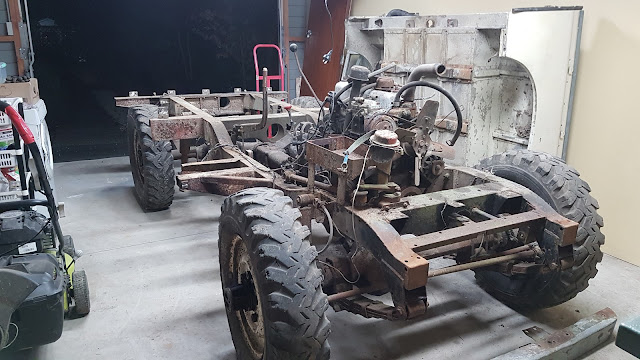I picked up a replacement diff to replace the knackered rear diff. It's a late series 3 diff, and seems to be in good condition with minimal play. These diffs have a flat bottom, and don't have the bolt on pinion oil seal carrier like the earlier diffs. They came about in 1971 when the Range Rover was released, as the same casting is shared across all models. So late Series 2A's, and all 3's (SWB) should have this type of diff. I'm now chasing a second diff like this, so that I have a matching pair front and back. I've cleaned up my front diff and it appears to be a very early series 1 diff, stamped 1953! So I definitely want something more 'era correct'
While having a look at the gearbox, I went in search of the serial number. Turns out its a Series 2A gearbox. Seems this Land Rover has had a fair bit of parts swapped over it's life. So now I'm on the lookout for a series 3 gearbox, to keep it all correct. The 2A box would be fine, but they don't have a synchromesh on 1st and 2nd gear, so there is a noticeable difference.
Gearbox serial number
I hope to have the chassis sandblasted next week, then it's going to be a nice change from cleaning and painting, to grinding and welding.
Stay tuned.
















































